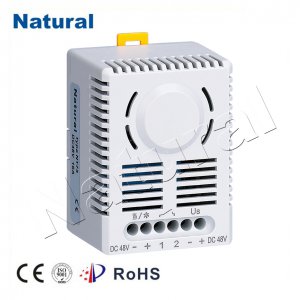 28 items Patent
28 items Patent
 28 items Patent
28 items Patent
 28 items Patent
28 items Patent

Discover the ultimate temperature protection with Normally Open/Closed Thermostat Thermal Protectors – versatile devices for critical applications.

In the world of temperature-sensitive applications, the importance of reliable thermal protection cannot be overstated. Introducing Normally Open/Closed Thermostat Thermal Protectors, versatile devices designed to ensure optimal temperature regulation and safeguard critical components. This article unveils the ingenuity and versatility of these thermal protectors and their vital role in diverse industries.
The Normally Open/Closed Thermostat Thermal Protectors are a class of temperature-sensitive switches that function based on the principles of thermal expansion and contraction. They are engineered to open or close a circuit at specific temperature thresholds, depending on their configuration as either normally open (NO) or normally closed (NC). These protectors serve as indispensable components in systems where precise temperature control is critical for safety and performance.
The Normally Open (NO) Thermal Protectors operate as temperature-sensitive switches that remain open in their normal state. Once the temperature reaches a predetermined threshold, the responsive element within the protector expands, causing the switch to close the circuit. This closure can trigger various actions, such as activating cooling systems, halting operations, or alerting operators to potential issues.
Conversely, the Normally Closed (NC) Thermal Protectors are normally closed switches that open their circuits when the temperature exceeds the set threshold. When the responsive element undergoes thermal expansion, it causes the switch to open, interrupting current flow and signaling an over-temperature condition. This mechanism is especially crucial in safety-critical systems, preventing overheating and potential hazards.
The versatility of Normally Open/Closed Thermostat Thermal Protectors enables their application across diverse industries and scenarios. In household appliances, these protectors play an essential role in preventing overheating and ensuring user safety. From irons to coffee makers and space heaters, the thermal protectors offer peace of mind to consumers and manufacturers alike.
In the automotive sector, where temperature control is vital for engine efficiency and safety, the thermal protectors safeguard critical components. They prevent overheating in radiators, fans, and cooling systems, mitigating the risk of engine damage and breakdowns. Moreover, they are employed in airbag systems, electronics, and battery management to ensure optimal performance and longevity.
In the electronics industry, sensitive components and circuits can be susceptible to damage from excessive temperatures. Normally Open/Closed Thermostat Thermal Protectors act as guardians, detecting temperature anomalies and triggering safety mechanisms to prevent costly failures and preserve equipment integrity.
Moreover, in industrial settings, where precision control is crucial for processes and equipment, these protectors serve as vital safety measures. They are found in pumps, motors, transformers, and more, ensuring continuous operation while protecting against thermal overload.
In medical applications, where temperature regulation is paramount for patient comfort and safety, thermal protectors are integrated into medical devices and equipment. From imaging systems to laboratory instruments, the thermal protectors contribute to reliable and efficient operation.
The Normally Open/Closed Thermostat Thermal Protectors are designed to be adaptable and easy to integrate into various systems. They come in various configurations, enabling customization to specific application requirements. Their straightforward installation and low maintenance make them accessible solutions for engineers and technicians across industries.
In conclusion, the Normally Open/Closed Thermostat Thermal Protectors stand as guardians of temperature-sensitive applications, ensuring precision control and safeguarding critical components. Their versatility and reliability make them indispensable across diverse industries, from automotive to electronics and beyond. Embracing these thermal protectors unlocks the potential for enhanced safety, efficiency, and performance, making them indispensable in the pursuit of temperature protection and optimal functionality.